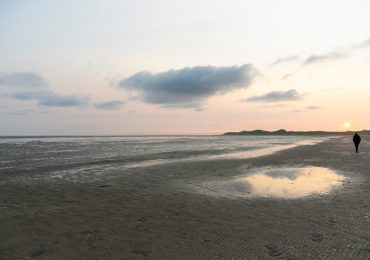THIS is the terrifying moment a live TV studio was rocked by the huge 7.7 magnitude earthquake in Taiwan.
Dramatic footage shows a reporter desperately trying to keep her balance while clinging onto the big screen as dozens of dangling studio lights risk falling from the ceiling.
twitter/@YWNReporterThis reporter desperately tries to keep her balance as her studio shakes[/caption]
twitter/@YWNReporterThe lights rattle violently in terrifying footage[/caption]
APA partially collapsed building is seen in the eastern city of Hualien[/caption]
X/TwitterImages shared on social media seemed to suggest the earthquake had caused mass landslides[/caption]
The presenter appeared to calmly keep delivering the news as her studio kept shaking relentlessly.
The shocking clip saw horrified social media users flocking to the comment section, with some of them commending the journalist’s attitude.
One wrote: “I will give it to that lady for hanging in there and giving the news, they should give her a raise.”
Another added: “Impressed by the reporter who continues talking even with everything shaking! That’s terrifying.”
A third replied: “That’s some dedication there. Not sure if it was a good idea though while the ceiling above you is shaking like crazy.”
TREMOR TERROR
The massive earthquake – the nation’s strongest in 25 years – shocked Taiwan just before 8am local time (1am UK time) on Wednesday.
It sparked tsunami fears, downed buildings and triggered landslides.
Nine deaths and at least 821 injuries have so far been confirmed.
Frantic rescuers were left battling to save at least 77 people still trapped in collapsed buildings this morning.
Shocking pictures show buildings fallen on one side and rubble scattered across streets in Hualien, an eastern coastal city near the epicentre of the earthquake.
APA leaning building in Hualien is cordoned off in the aftermath of the quake, with residents trapped inside[/caption]
APRescuers search for survivors in a building in Hualien[/caption]
Three hikers were killed in a landslide in Taroko National Park near the offshore epicentre.
In the capital Taipei, tiles fell from roofs and debris rained down from building sites.
Dozens of schools rushed to evacuate their students to sports fields – handing them yellow safety helmets.
Some also covered their heads with textbooks in a bid to shield themselves from falling objects as aftershocks continued.
Traffic along the East Coast was brought to a standstill as landslides and debris hit tunnels and highways, damaging vehicles.
TSUNAMI ALERT
Many people also fled their homes after Taiwan and Japan issued tsunami alerts.
The Japan Meteorological Agency (JMA) warned a tsunami could strike areas around Okinawa, Miyakojima and Yaeyama Islands.
“Tsunami waves are approaching the coasts. Evacuate as quickly as possible. Waves can hit repeatedly. Continue to evacuate until all warnings are lifted,” the meteorological agency said.
The quake, described as “very shallow”, struck 18km south of Taiwan’s Hualien city, according to the US Geological Survey.
JMA forecast a tsunami of up to three meters (9.8ft) after the quake hit.
About half an hour later, it said the first wave of the tsunami was already believed to have arrived on the coasts of Miyako and Yaeyama islands.
A wave of 30cm was detected on the coast of Yonaguni island about 15 minutes after the quake struck.
The earthquake was felt across Taiwan, according to the country’s Central Weather Administration agency.
It measured 7.7 at the epicentre and around four at its weakest points.
Are Earthquakes Frequent in Taiwan?
Taiwan experiences frequent earthquakes due to its location along the Pacific Ring of Fire, where tectonic plates meet.
These earthquakes vary in magnitude and frequency but are relatively common.
Taiwan is situated at the convergence of several tectonic plates, including the Philippine Sea Plate, the Eurasian Plate, and the Yangtze Plate.
This makes it highly susceptible to seismic activity. The island experiences numerous earthquakes each year, ranging from minor tremors to more significant events.
The most notable fault line in Taiwan is the Longitudinal Valley Fault, which runs along the eastern side of the island.
This fault is responsible for many earthquakes, including some of the most destructive ones in Taiwan’s history.
Taiwan has implemented strict building codes and earthquake preparedness measures to mitigate the impact of seismic events.
Despite these efforts, earthquakes remain a constant threat, and the country continues to monitor and improve its infrastructure to enhance resilience against seismic activity.
Locals were warned to evacuate ahead of three-metre high waves
AFPRockfall from a mountain near Kanan bridge in Hualien[/caption]
X/TwitterOne local shared an image of a battered car online with the caption ‘the earthquake in Taiwan shook quite a bit’[/caption]
Leave a comment








